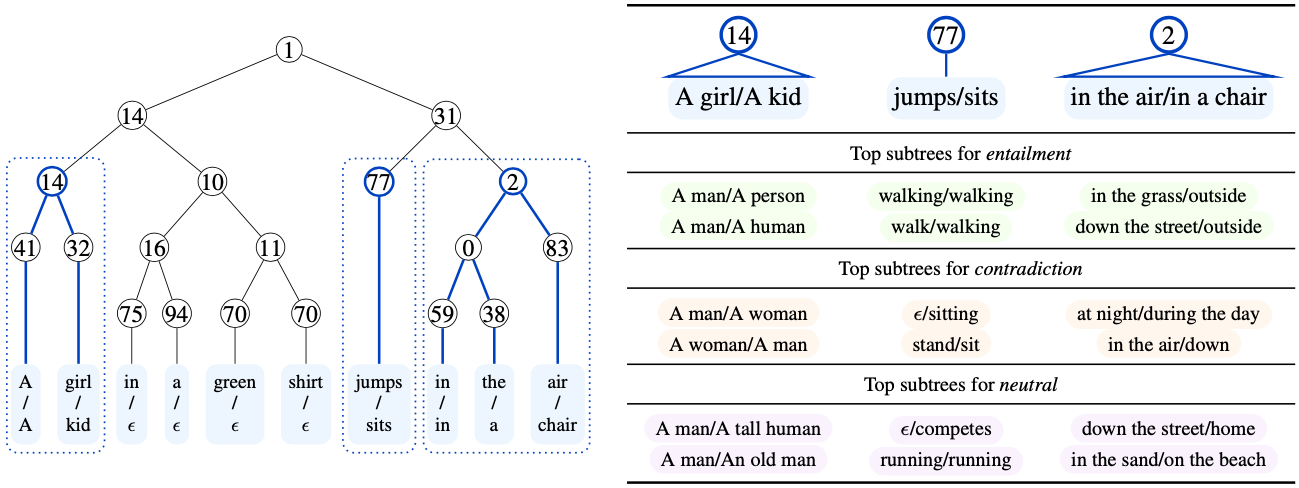Finding Dataset Shortcuts with Grammar Induction
Many NLP datasets have been found to contain shortcuts: simple decision rules that achieve surprisingly high accuracy. However, it is difficult to discover shortcuts automatically. Prior work on automatic shortcut detection has focused on enumerating features like unigrams or bigrams, which can find only low-level shortcuts, or relied on post-hoc model interpretability methods like saliency maps, which reveal qualitative patterns without a clear statistical interpretation. In this work, we propose to use probabilistic grammars to characterize and discover shortcuts in NLP datasets. Specifically, we use a context-free grammar to model patterns in sentence classification datasets and use a synchronous context-free grammar to model datasets involving sentence pairs. The resulting grammars reveal interesting shortcut features in a number of datasets, including both simple and high-level features, and automatically identify groups of test examples on which conventional classifiers fail. Finally, we show that the features we discover can be used to generate diagnostic contrast examples and incorporated into standard robust optimization methods to improve worst-group accuracy.
PDF Abstract


 IMDb Movie Reviews
IMDb Movie Reviews
 SNLI
SNLI